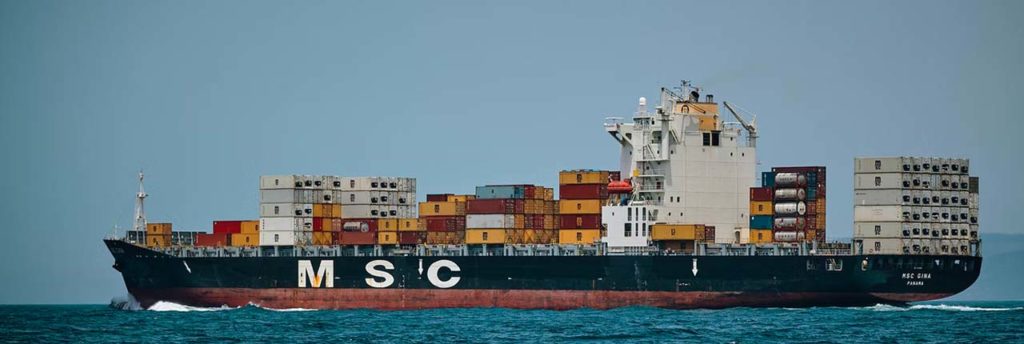Here at John Pipe International, we have over 60 years of experience dealing with packing for export, as well as sea freight, land freight and air freight. This guide will help you understand some of the advantages and disadvantages of sea freight services.
Advantages of Sea Freight
Sea Freight is cost effective
Shipping by sea is often the most cost effective way to transport your freight, especially over long distances. Some statistics show that the cost of shipping by ocean is 4-6 times less than by air. This is due to a variety of factors, such as much higher efficiency. Saving money on shipping allows you to keep running costs down, and reduce the price of products when sold to end-users, giving you an advantage over competitors.
Sea Freight is very efficient
This type of transport is efficient and able to accommodate a wider range of sea freight cargo sizes than any other form of transportation. Shipping companies offer a lot of flexibility over how cargoes can be stored, with options such as Less Than Container Load (LCL) and Full Container Load (FCL).
Able to handle large cargo
Whereas land and air freight may often be very limited in the size of cargo that they are able to accommodate, sea freight allows for a wider range of oversized, heavy or bulky cargo. As mentioned above, shipments can occupy a full container if needed, or transport by boat can allow for even larger loads including for example large vehicles or construction materials.
Safely transporting dangerous goods
Unlike some air and land shipping options, sea freight is often able to accommodate hazardous or dangerous cargo safely. The sailing industry is very experienced in the transport of these types of goods, and maritime safety is continually getting better. The flexibility mentioned above is also relevant to safety, as some items may need to be sealed in a full container alone. Alternatively, groupage loads may be more appropriate, as containers are often more tightly packed and allow less movement of items inside.
It’s green
Ships have a much lower carbon footprint than other forms of transportation such as road, rail and air. They produce a lower volume of greenhouse gas emissions for the amount of distance travelled than any other form of transport. In a world where environmentally friendly business practices are becoming more important and customers are more environmentally conscious, being green matters.
It makes a lot of places accessible
Transport by boat allows for very easy access to coastal locations, and potentially offers a wider variety of destinations than other forms of transport. In addition to this, there are some places such as Antarctica and The Falkland Islands that are not easily accessible by other forms of transport. In this case, ocean shipping is the smart option.
Disadvantages of Sea Freight
Sea freight takes time
By far the biggest disadvantage of this method of shipping is the time it takes. If your cargo is time-sensitive, sea freight may not be a sensible option. In some cases it could take a month or more for your item to reach its destination. If you are a company that relies on keeping items in stock, you may have to arrange orders in advance to stay ahead.
It can be risky
Because transport by sea takes longer, it increases the possibility of adverse events during transit. As well as the risk of delays and potential damage caused by bad weather, shipments travelling across certain regions may be at risk of piracy.
Harder to track
Transport by sea can be harder to track accurately than other methods such as air. Whereas air transport is very rigorously documented and scheduled, ocean routes might be subject to changing routes or timetables, especially when combined with adverse weather conditions.
It is inflexible
As well as requiring additional modes of transport to move items inland, sea freight is heavily reliant on having proper infrastructure. This is also dependent on the size of the ship, as a small freight vessel may be able to deliver to a wider range of smaller ports than a very large container ship. Shipping routes can also be inflexible compared to other forms of transport such as road freight.
Choosing the right form of transport for your cargo can be confusing, but we want to help. With our wide range of connections and access to expert advice, John Pipe International can assist you in finding the right solution. Get in touch with us now for a same-day callback.
We hope this guide to sea freight has been useful. For more information about our sea freight services, click here.

